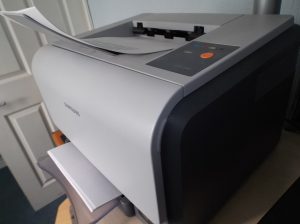Did you know that nearly 90% of healthcare providers are now using Electronic Health Records (EHR) systems? This staggering statistic highlights the integral role of healthcare IT systems in modern medical practice.
From streamlining patient care with telemedicine platforms to enhancing operational efficiency through practice management software, these systems are transforming the way healthcare is delivered.
But what lies beyond the surface of these widely adopted technologies? As you explore the various types of healthcare IT systems, you’ll uncover the potential for innovation in patient care and the challenges that come with integrating advanced technology into existing healthcare infrastructures.
Electronic Health Records (EHR)
EHR systems consistently enhance healthcare delivery by securely digitizing and storing thorough patient records, from medical history to treatment plans. You’re empowered with Electronic Health Records, central to modern Healthcare IT Systems, where informed decision-making is paramount. These systems mitigate risks associated with physical document loss or damage, ensuring your medical history is perpetually accessible and intact.
Integration of AI and Machine Learning within EHR systems revolutionizes patient care. By analyzing extensive data, these technologies uncover insights for diagnosis and treatment, aligning with your need for cutting-edge solutions. Predictive analytics further enable doctors to identify high-risk patients early, offering personalized care tailored to individual health profiles.
The fusion of AI into EHR systems doesn’t just streamline processes; it elevates patient outcomes. Through intuitive interfaces, healthcare providers craft personalized treatment plans, honing the precision of care you receive. This technological synergy fosters innovation and efficiency, placing you at the center of a more responsive healthcare ecosystem.
In essence, EHR systems, augmented by AI and predictive analytics, embody the future of healthcare. They’re not just repositories of data but dynamic tools for enhancing personalized care and informed decision-making, ensuring your freedom to access quality healthcare is uncompromised.
Telemedicine Platforms
You’ll find that telemedicine platforms, with their innovative features, offer unparalleled accessibility and convenience in healthcare.
However, as these platforms grow in popularity, you must also consider the security and privacy concerns that arise with digital healthcare delivery.
Analyzing these aspects provides a thorough understanding of the potential and challenges of telemedicine in modern healthcare systems.
Telemedicine Platform Features
Telemedicine platforms revolutionize patient care by offering virtual consultations and remote monitoring capabilities. As you navigate the adoption of telemedicine, especially heightened during the COVID-19 pandemic, it’s important to understand the key features that set these platforms apart:
- Real-time communication and secure video conferencing guarantee that you can have confidential interactions with healthcare providers from anywhere.
- The exchange of medical information and electronic prescriptions is streamlined, making your healthcare experience more efficient.
- A significant rise in adoption, with a 154% increase in telehealth visits in the US in 2020, underscores the growing trust and reliability of these platforms.
These features not only offer you freedom in managing your health but also ensure that care is timely, secure, and adaptable to your lifestyle.
Accessibility and Convenience Benefits
By bridging geographical gaps, telemedicine platforms enhance healthcare accessibility and convenience for patients worldwide. These virtual solutions offer real-time consultations and remote patient monitoring (RPM), eliminating the need for physical presence in a healthcare facility. They’re cost-effective alternatives to traditional visits, saving you time and resources while providing the same level of care.
Through RPM, telemedicine enables early detection of health issues, ensuring timely interventions. This proactive approach fosters improved health outcomes. The telemedicine sector’s rapid growth reflects its widespread adoption, with projections indicating its market value will soar to $459.8 billion by 2030. This surge underscores the global shift towards virtual healthcare solutions, emphasizing their critical role in modern healthcare delivery.
Security and Privacy Concerns
As healthcare’s digital landscape expands, the security and privacy of patient data on telemedicine platforms become paramount concerns. You’re maneuvering a field where:
- Encryption and secure authentication methods aren’t just add-ons but necessities to protect your information from prying eyes.
- Compliance with HIPAA regulations guarantees your data remains confidential, safeguarding your freedom to seek care without fear of privacy breaches.
- The looming threats of data breaches and hacking attempts underscore the critical need for advanced cybersecurity measures to shield your sensitive medical records.
Essentially, as you rely more on telemedicine platforms for healthcare delivery, understanding the importance of these security and privacy protocols is essential. It’s about ensuring your information stays safe in an ever-evolving digital healthcare environment.
Practice Management Software
In the domain of healthcare, practice management software plays a pivotal role in automating and streamlining administrative tasks to enhance operational efficiency. These systems, including renowned ones like eClinicalWorks, are indispensable for healthcare facility optimization. They go beyond mere scheduling and billing; they manage patient records with an efficiency that transforms the very fabric of healthcare delivery. By integrating patient preferences into the workflow, these systems make sure that every aspect of care is aligned with individual needs, greatly boosting healthcare facility performance.
Practice management systems are the backbone of workflow optimization. They dissect the complexities of daily operations, turning potential chaos into a streamlined process that benefits both patients and healthcare providers. The automation of administrative tasks liberates staff from the tedium of paperwork, allowing them to focus on delivering superior patient care. This shift not only elevates patient satisfaction but also drives the overall success of the facility.
Health Information Exchange (HIE)
Health Information Exchange (HIE) systems revolutionize patient care coordination by enabling secure and efficient data sharing among healthcare providers. You’re exploring a landscape where interoperability isn’t just a buzzword but the backbone of transformative healthcare services. By embracing HIE, you open up the potential for seamless patient information flow, transcending organizational boundaries. This shift isn’t merely technical; it’s a leap towards patient-centric care, where every decision is informed, timely, and, importantly, safe.
Consider the implications of HIE:
- Interoperability: Your systems talk, eliminating silos. Information flows freely, ensuring that every caregiver has the full picture, enhancing care coordination.
- Patient Safety: You’re reducing medical errors. With thorough data at your fingertips, diagnostic accuracy improves, and adverse events decline.
- Cost Efficiency: You’re cutting down on redundant tests and procedures, directly impacting healthcare costs. It’s not just about saving money; it’s about allocating resources wisely for better outcomes.
In a world where data is king, HIE systems are your knights, safeguarding patient information while ensuring it serves its noble purpose: to heal. You’re not just adopting a technology; you’re championing a cause for better patient outcomes, robust public health reporting, and a significant leap towards mitigating healthcare costs and errors.
Medical Imaging Systems
Building on the foundation of Health Information Exchange systems, Medical Imaging Systems like PACS now offer a revolutionary way to enhance collaboration among healthcare professionals. You’re no longer confined to the walls of a single institution; PACS break down barriers, allowing for real-time collaboration that skyrockets diagnostic accuracy and optimizes treatment planning.
With the integration of AI and machine learning, PACS aren’t just storage solutions anymore. They’re intelligent systems capable of automated anomaly detection and predictive analytics. This isn’t just about efficiency; it’s about revolutionizing how you approach diagnosis and care. AI’s ability to sift through vast amounts of imaging data and pinpoint potential issues transforms the landscape of medical imaging, pushing the boundaries of what’s possible in patient care.
Additionally, the digitization of imaging data through PACS eliminates the cumbersome process of handling physical X-ray films. This streamlining is a game-changer, making it faster and easier for you to access and manage critical imaging data. As healthcare professionals, you’re at the forefront of leveraging these advancements, ensuring that medical imaging systems continue to play a pivotal role in elevating patient care outcomes.
Laboratory Information Systems
As you explore Laboratory Information Systems (LIS), it’s vital to understand their key features, including automation of lab processes, sample tracking, and result reporting.
The integration of LIS with Electronic Health Records (EHR) stands out as a pivotal aspect, ensuring a seamless data exchange across clinical environments.
This synergy not only streamlines workflows but also greatly bolsters diagnostic accuracy and efficiency within healthcare settings.
Key Features Overview
To understand the impact of Laboratory Information Systems (LIS) on healthcare efficiency, it’s important to explore their key features. LIS, a cornerstone of Health Information Technology, enhance workflow efficiency and patient care outcomes through:
- Barcode scanning: Streamlines specimen tracking, ensuring accuracy and reducing errors.
- Automated result entry: Minimizes manual input, speeding up the process from test order to result delivery.
- Quality control monitoring: Guarantees the reliability of test results, fostering trust in laboratory data.
Integration With EHR Systems
Integrating Laboratory Information Systems (LIS) with Electronic Health Records (EHR) greatly streamlines healthcare workflows, directly impacting patient care quality. This integration serves as a bridge, ensuring that lab test results automatically populate into a patient’s EHR. It’s a critical leap towards minimizing manual errors and enhancing diagnostic accuracy.
You’ll find that healthcare providers can access real-time lab data, making informed decisions swiftly, which is paramount for patient safety and treatment efficiency. Also, this synergy between LIS and EHR fosters improved care coordination. It notably cuts down on result turnaround times, propelling the healthcare sector towards a future where quality and efficiency aren’t just ideals but realities.
The integration underpins a system where every action taken is a step towards optimizing healthcare quality.
Health and Wellness Apps
In recent years, health and wellness apps have surged in popularity, offering over 350,000 options across major app stores to monitor and enhance various aspects of personal health. These digital health solutions have revolutionized how you can manage your well-being, from fitness tracking and nutrition monitoring to mental health support and chronic disease management. They provide personalized insights, helping you to make informed decisions about your health.
The significance of these apps lies in their ability to:
- Empower you to take control of your health by providing tools for self-management and proactive care.
- Offer convenience through easy access to health information and resources, anytime and anywhere.
- Deliver personalized insights and recommendations based on your unique data and health goals.
With the global health and wellness app market projected to reach $123 billion by 2027, it’s clear that the demand for these apps is more than just a trend. They promote a shift towards proactive healthcare management, granting you the freedom to manage your health in a way that fits your lifestyle. This shift not only enhances individual well-being but also has the potential to reduce the overall strain on healthcare systems by encouraging preventative care.
Hospital Management Systems
You’ll find that Hospital Management Systems (HMS) are integral to streamlining healthcare operations, focusing on core functionalities like appointment scheduling and billing.
These systems aren’t standalone; their power is amplified when integrated with other healthcare IT solutions, enhancing data flow and decision-making.
Such integration leads to optimized operations, better patient care, and more efficient administrative processes.
Core Functionalities Overview
Hospital Management Systems streamline a variety of key operations, offering a centralized solution to enhance efficiency and patient care. These systems are pivotal healthcare software solutions that leverage patient data and Electronic Medical Records to improve patient care outcomes. By automating administrative tasks, they not only streamline financial operations but also notably contribute to enhancing patient satisfaction.
Key functionalities include:
- Automated anomaly detection in patient data, ensuring timely and accurate diagnosis.
- Decision Support Systems (DSS) that aid healthcare professionals in making informed decisions.
- Master Patient Index (MPI) for a unified, accurate view of patient records across various departments.
Integration With Other Systems
Seamlessly integrating with other healthcare IT systems, hospital management systems streamline administrative tasks and enhance operational efficiency. By incorporating functions such as patient registration, appointment scheduling, billing, and inventory management, these systems create a unified platform.
Integration with Electronic Health Records (EHR) guarantees that patient data is accessible across departments, providing a centralized view that fosters better coordination and communication among healthcare staff. This holistic approach not only simplifies hospital activities but also enhances decision-making through real-time insights and analytics.
As a result, healthcare staff can navigate hospital operations with greater ease and precision, leading to improved patient care and operational effectiveness.
Clinical Decision Support Systems
Clinical Decision Support Systems (CDS) revolutionize how healthcare professionals make decisions, providing real-time, evidence-based guidance tailored to each patient’s unique circumstances. By leveraging a vast array of patient data and medical history, alongside best practices, these systems offer critical insights that empower you to make informed decisions during diagnosis and treatment processes.
CDS systems play a pivotal role in enhancing healthcare delivery by:
- Reducing medical errors: Minimizing the likelihood of oversight or misdiagnosis by providing patient-specific recommendations and alerts.
- Improving patient outcomes: Tailoring healthcare interventions to individual needs guarantees better management of diseases and conditions, leading to improved health statuses.
- Increasing healthcare efficiency: Streamlining the decision-making process through integration with Electronic Health Records (EHR), making sure that you’re acting on the most accurate and up-to-date information available.
The use of CDS is a confirmation to the ongoing evolution in healthcare, shifting the paradigm towards a more data-driven and patient-centered approach. By adhering to evidence-based guidelines and utilizing these advanced tools, you’re not only minimizing risks but also enhancing the quality of care and patient safety. This technological advancement underscores the importance of leveraging IT to bolster healthcare efficiency and outcomes, making it an indispensable asset in the modern healthcare landscape.
Electronic Prescription Software
Building on the advancements in Clinical Decision Support Systems, Electronic Prescription Software further enhances healthcare efficiency by enabling providers to electronically send prescriptions directly to pharmacies. This technology streamlines the prescription process, reducing medication errors and bolstering patient safety. With accurate and legible prescriptions, the margin for error narrows, ensuring that patients receive the correct medications in a timely manner.
Electronic Prescription Software isn’t just about sending prescriptions; it’s a critical tool for increasing medication adherence. Through electronic reminders and notifications, patients are more likely to take their medications as prescribed, further safeguarding their health. This software seamlessly integrates with Electronic Health Records (EHR), providing healthcare providers with instant access to a patient’s medication history and allergies. This integration is essential for making informed prescribing decisions, minimizing the risk of adverse drug interactions.
Adherence to EPCS regulations is another significant aspect of Electronic Prescription Software, aimed at curbing prescription fraud and abuse. These regulations mandate the use of such software, ensuring that prescriptions for controlled substances are securely transmitted, thereby protecting both patient freedom and public health.
Conclusion
To conclude, you’ve witnessed a world where wellness and technology intertwine, transforming traditional treatment tactics. EHRs enhance efficiency, telemedicine tears down territorial barriers, and practice management systems streamline stressful schedules. HIEs hold the key to harmonious healthcare handovers, while medical imaging illuminates insights.
Health apps advocate for active living, hospital management systems harness holistic harmony, and clinical decision support systems carve clearer clinical pathways. Electronic prescription software epitomizes the evolution of expedient healthcare encounters. Together, these technologies are trailblazers, turning tides towards a future of fine-tuned, fastidious, and fundamentally improved healthcare.



